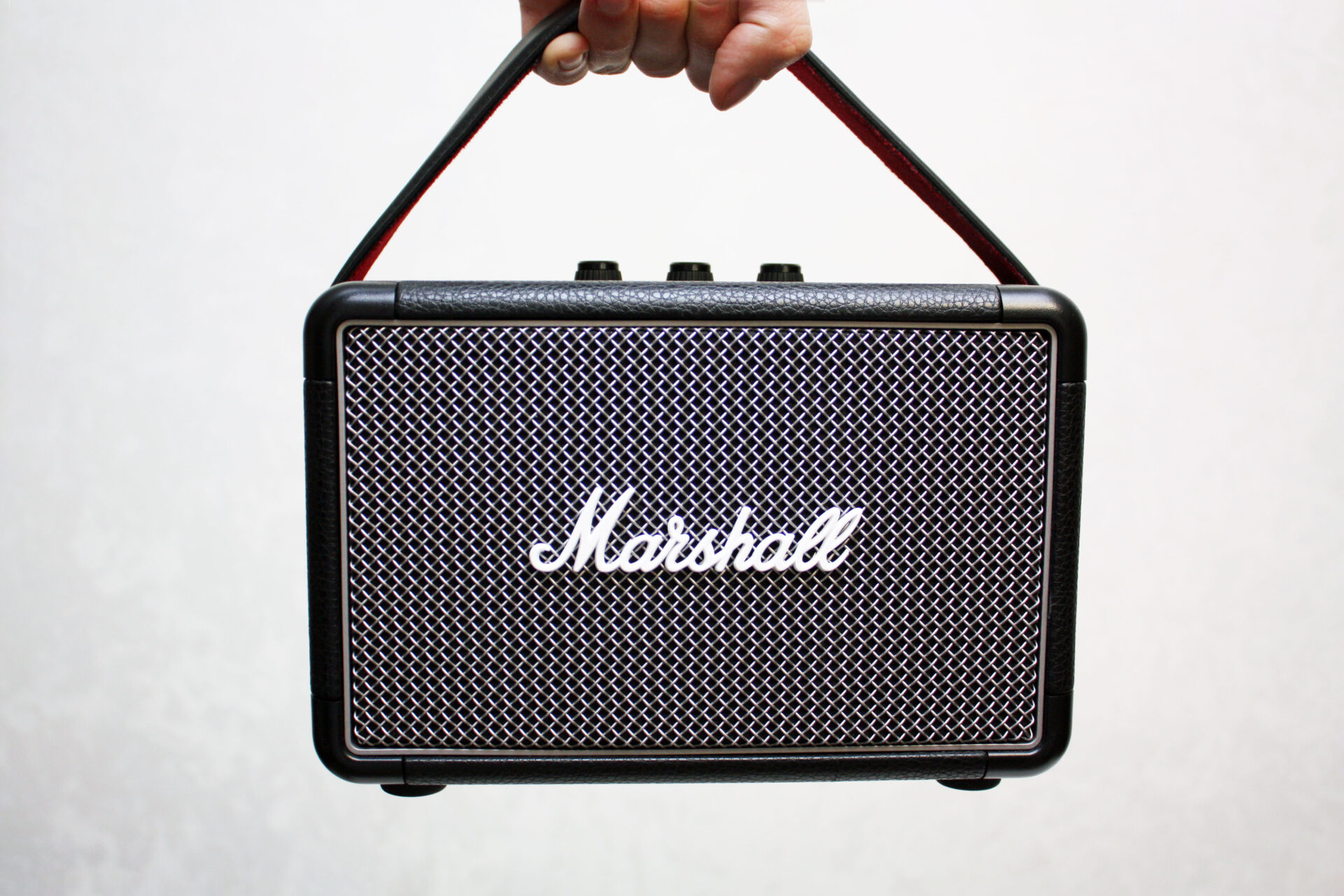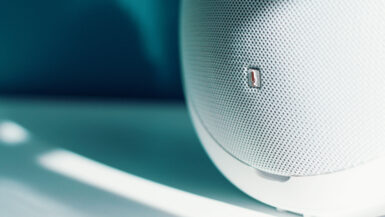In today’s modern world, breakthroughs in technology have opened up numerous possibilities to enhance the lives of individuals with visual impairments. One such advancement is the integration of voice-enabled smart home devices, which has the potential to revolutionize the way they navigate and interact with their living spaces. This article aims to provide a comprehensive guide on how to create a voice-controlled smart home tailored specifically for the visually impaired. We will delve into the benefits of adopting such technology, discuss the various devices available in the market, explore their compatibility, and offer step-by-step instructions on setting up an accessible, voice-driven ecosystem within the home. Join us as we embark on this journey towards greater independence and convenience for our visually impaired friends and loved ones.
Essential Voice-Activated Devices for Visually Impaired Users
Creating a voice-controlled smart home for the visually impaired involves selecting the right devices that cater to their unique needs. These gadgets should be user-friendly and accessible, allowing for seamless interaction and navigation within the home. In this section, we will discuss some essential voice-activated devices that can significantly improve the quality of life for visually impaired users.
Smart Speakers and Voice Assistants
At the heart of any voice-controlled smart home ecosystem is a reliable smart speaker with an integrated voice assistant. Devices like Amazon Echo (featuring Alexa), Google Home (featuring Google Assistant), or Apple HomePod (featuring Siri) can be used to control other smart devices, answer questions, set reminders, and perform a myriad of tasks using simple voice commands. These versatile gadgets provide a critical touchpoint for visually impaired users to interact with their smart home setup effortlessly.
Smart Lighting Solutions
One of the most crucial aspects of a smart home for visually impaired users is the ability to control lighting easily. Smart bulbs, such as Philips Hue or LIFX, can be connected to a voice assistant and operated through voice commands. This allows users to adjust the brightness, color, or even set routines for different times of the day, adding a layer of convenience and safety to their living environment.
Smart Thermostats
Maintaining a comfortable temperature in the home is essential for everyone, including those with visual impairments. Smart thermostats, like Nest or Ecobee, can be controlled using voice commands through a smart speaker or voice assistant. This enables users to adjust the temperature, set schedules, and monitor energy usage without needing to physically interact with the device.
Smart Door Locks and Security Systems
Safety and security are critical concerns for visually impaired individuals. Voice-activated smart door locks, such as August or Schlage, can be locked or unlocked using voice commands. Moreover, smart security systems like Ring or SimpliSafe can also be integrated with voice assistants, allowing users to monitor their home, receive alerts, and even communicate with visitors at the door – all without needing to see a screen or keypad.
Smart Appliances
Making daily tasks more manageable for the visually impaired involves integrating smart appliances into the home. Devices like voice-controlled coffee makers, robotic vacuum cleaners, or even smart ovens can be operated through voice commands, simplifying everyday chores and fostering greater independence for visually impaired users.
As we’ve explored in this section, incorporating essential voice-activated devices into the home can significantly improve the lives of visually impaired individuals. By choosing the right gadgets and combining them in a cohesive, accessible ecosystem, these users can enjoy greater convenience, safety, and independence in their daily lives.
Customizing Voice Commands for Seamless Navigation
In addition to selecting the right devices, it is essential to tailor the voice commands and interactions to cater specifically to the needs of visually impaired users. Customizing voice commands ensures that their smart home experience is intuitive, comfortable, and efficient. In this section, we will explore various aspects of personalizing voice commands and settings for seamless navigation within a voice-controlled smart home ecosystem.
Choosing an Accessible Wake Word
To initiate a voice command, users need to use a wake word, such as “Alexa,” “Hey Google,” or “Hey Siri.” To make interactions more accessible and user-friendly for visually impaired individuals, it is critical to select a wake word that is easy to pronounce and remember. For instance, Amazon Echo allows users to change the default wake word “Alexa” to “Echo,” “Amazon,” or “Computer,” providing an opportunity to choose a word that resonates best with the user.
Adjusting Voice Assistant’s Response Speed
Visually impaired users may require more time to process information delivered by voice assistants. Most voice assistants, like Amazon’s Alexa and Google Assistant, have settings to adjust the response speed. Slowing down the speech rate can significantly enhance the user experience, making it easier for them to understand and process the information provided by the voice assistant.
Creating Custom Voice Commands and Routines
To streamline daily tasks and interactions, users can create custom voice commands and routines tailored to their specific needs. For example, a user can set up a routine that turns on the lights, adjusts the thermostat, and starts brewing coffee with a single command like “Good morning.” This customization ensures that visually impaired users can easily control multiple devices and perform various tasks using simple, intuitive voice commands.
Enabling Voice Feedback for Device Control
For visually impaired users, receiving verbal confirmation of completed tasks is crucial. By enabling voice feedback on smart devices, users can be assured that their voice commands have been executed correctly. For instance, when controlling smart lights, the voice assistant can be set to respond, “Living room lights are now on,” providing instant feedback and confirmation for the user.
Utilizing Voice Assistant Skills and Integrations
Voice assistants have numerous skills and integrations that can be enabled to enhance their functionality for visually impaired users. For example, enabling a news skill can allow the user to receive daily news updates read by the voice assistant. Additionally, integration with third-party services like Uber or food delivery apps can further improve the convenience and independence of visually impaired users.
By customizing voice commands and settings, visually impaired users can enjoy a more accessible and seamless smart home experience. Taking the time to personalize interactions ensures that their voice-controlled ecosystem is tailored specifically to their needs, promoting greater independence and convenience in their daily lives.
Integrating Smart Home Devices for Enhanced Accessibility
Crafting a voice-controlled smart home for the visually impaired goes beyond simply selecting the right devices. It also involves integrating these gadgets in a way that maximizes accessibility and ease of use for the user. In this section, we will discuss various strategies and best practices for effectively integrating smart home devices to create an accessible environment that caters specifically to the needs of visually impaired individuals.
Optimizing Device Placement for Acoustic Clarity
The location of voice-enabled devices plays a critical role in ensuring optimal performance and usability for visually impaired users. Placing smart speakers and voice assistants in central areas with minimal obstructions can help reduce echo and improve voice recognition. Additionally, ensuring that devices are positioned at a comfortable height and within earshot can further enhance the user’s ability to interact with their smart home system effortlessly.
Establishing Consistency in Device Operation
To make the smart home experience more intuitive and user-friendly, it is essential to maintain consistency in device operation. This can be achieved by using similar voice commands and interactions across multiple devices, enabling visually impaired users to navigate their smart home setup with ease. Additionally, incorporating consistent naming conventions for devices and rooms can significantly simplify the process of controlling various smart home functions.
Configuring Device Groupings for Simplified Control
Grouping smart home devices by room or function can greatly streamline the process of managing multiple gadgets simultaneously. By creating device groups, visually impaired users can issue a single voice command to control multiple devices within a specific area. For example, a user can say, “Turn off all lights in the living room,” rather than having to address each light individually. This approach simplifies device management and fosters a more accessible and efficient smart home environment.
Implementing Voice-Activated Scenes for Customized Experiences
Creating voice-activated scenes can significantly enhance the accessibility of a smart home for visually impaired users. Scenes allow multiple devices to be activated simultaneously, creating a customized atmosphere tailored to specific activities or moods. For example, a “Movie Night” scene could dim the lights, lower the thermostat, and turn on the TV, all with a single voice command. By incorporating scenes into the smart home ecosystem, visually impaired users can enjoy a more personalized and seamless experience.
Providing Accessibility Training and Support
To ensure that visually impaired users can fully benefit from their voice-controlled smart home, it is essential to provide training and support on how to interact with and navigate the system. This can involve offering tailored tutorials, sharing best practices, and providing ongoing assistance to help users feel comfortable and confident in their ability to manage their smart home devices independently.
As we have explored in this section, integrating smart home devices in a thoughtful and accessible manner is crucial for creating a voice-controlled environment that caters to the unique needs of visually impaired users. By adopting these strategies and best practices, we can help these individuals enjoy a more independent, convenient, and enjoyable living experience.
Ensuring Privacy and Security with Voice-Controlled Systems
As we create a voice-controlled smart home for visually impaired individuals, it is crucial to address the concerns of privacy and security associated with these systems. These devices, often connected to the internet, could potentially expose users to cyber threats or unwanted data collection. In this section, we will discuss various measures that can be taken to safeguard the privacy and security of visually impaired users while they enjoy the benefits of a voice-controlled smart home.
Securing Home Network and Wi-Fi
A secure home network is the foundation of a safe smart home environment. To protect against potential cyber threats, users should ensure that their Wi-Fi network is encrypted with a strong password and enabled with a firewall. Additionally, updating router firmware regularly and separating smart home devices by creating a guest network can further enhance the security of the voice-controlled ecosystem.
Selecting Trusted Devices and Manufacturers
When choosing voice-activated devices for a smart home, it is essential to opt for reputable manufacturers with strong security measures in place. Trusted brands often prioritize user privacy and security and are more likely to provide regular software updates, addressing potential vulnerabilities and enhancing overall system protection.
Updating Device Software and Firmware
Keeping smart home devices up-to-date with the latest software and firmware is another critical aspect of maintaining a secure environment. Regular updates often include security patches that protect against vulnerabilities and cyber threats. Users should enable automatic updates whenever possible to ensure their devices are always running the latest security measures.
Configuring Device Privacy Settings
To protect user privacy, it is essential to review and configure the privacy settings on voice-activated devices. Disabling unnecessary features and limiting data collection can help maintain user privacy while still enjoying the benefits of the smart home system. For instance, users can deactivate voice recordings or choose to delete them periodically, reducing the risk of unauthorized access to their personal information.
Employing Two-Factor Authentication
Adding an extra layer of security, two-factor authentication (2FA) can significantly reduce the risk of unauthorized access to smart home devices. With 2FA enabled, users must enter a one-time code sent to a trusted device, such as a smartphone, in addition to their password. This added step makes it more challenging for potential intruders to gain control of the voice-controlled system.
Creating Strong and Unique Passwords
Using strong and unique passwords for smart home devices and associated apps is a simple yet effective way to enhance security. Users should avoid common or easily guessable passwords and instead opt for a combination of uppercase and lowercase letters, numbers, and special characters. It is also advisable to use different passwords for each device to prevent a single breach from compromising the entire system.
By implementing these measures, we can ensure that visually impaired users can enjoy a safe and secure voice-controlled smart home experience. Prioritizing privacy and security enables them to benefit from the convenience and independence afforded by these systems while minimizing potential risks and safeguarding their personal information.
Top Voice Assistant Apps for Effective Home Management
In this era of technological advancements, voice assistant apps play a significant role in enhancing accessibility and convenience for visually impaired individuals. These apps can assist users in managing their smart home devices, organizing daily routines, and providing essential information, all through simple voice commands. In this section, we will explore some of the top voice assistant apps that can greatly facilitate effective home management for visually impaired users.
Amazon Alexa: A Comprehensive Smart Home Ecosystem
Amazon’s Alexa is a powerful voice assistant app that allows users to control a wide range of smart home devices, from lighting and security systems to thermostats and appliances. With its extensive compatibility and integration capabilities, Alexa can serve as the central hub for managing a visually impaired user’s smart home setup. In addition, its extensive library of skills and integrations makes it highly versatile, enabling users to access third-party services like Uber, Spotify, and various news outlets.
Google Assistant: AI-Powered Assistance for Everyday Tasks
Google Assistant is renowned for its advanced AI algorithms, which enable it to provide highly accurate and contextual information to users. Visually impaired users can leverage Google Assistant to control their smart home devices and access essential information like weather updates, news, and calendar events. Additionally, the app supports multiple languages and dialects, making it highly accessible for a diverse range of users.
Apple Siri: Seamless Integration with the Apple Ecosystem
Siri, Apple’s voice assistant, offers a seamless experience for visually impaired users who are already part of the Apple ecosystem. With its compatibility with devices like the iPhone, iPad, Apple Watch, and HomePod, Siri provides a consistent and user-friendly voice control experience. Users can manage their smart home devices, set reminders, send messages, and access a variety of information using simple voice commands.
Cortana: Microsoft’s Virtual Assistant for Windows Users
Cortana, developed by Microsoft, is a versatile voice assistant app designed primarily for Windows users. Although its smart home compatibility is somewhat limited compared to its counterparts, Cortana excels in productivity and organization tasks. Visually impaired users can utilize Cortana to manage their schedule, set reminders, create lists, and perform various tasks across Microsoft’s suite of applications.
Bixby: Samsung’s Voice Assistant for a Customized Experience
Bixby, Samsung’s voice assistant, provides an intuitive and personalized experience for visually impaired users who own Samsung devices. With its ability to learn and adapt to the user’s preferences and voice, Bixby offers a tailored smart home management experience. Additionally, it integrates seamlessly with Samsung’s range of smart home devices, enabling users to control their appliances, lighting, and security systems with ease.
As we have explored in this section, these top voice assistant apps offer a range of features and functionalities to support visually impaired users in effectively managing their smart home environment. By selecting the most suitable voice assistant app based on their specific needs and preferences, users can enjoy a more accessible, convenient, and independent living experience.





Leave a reply